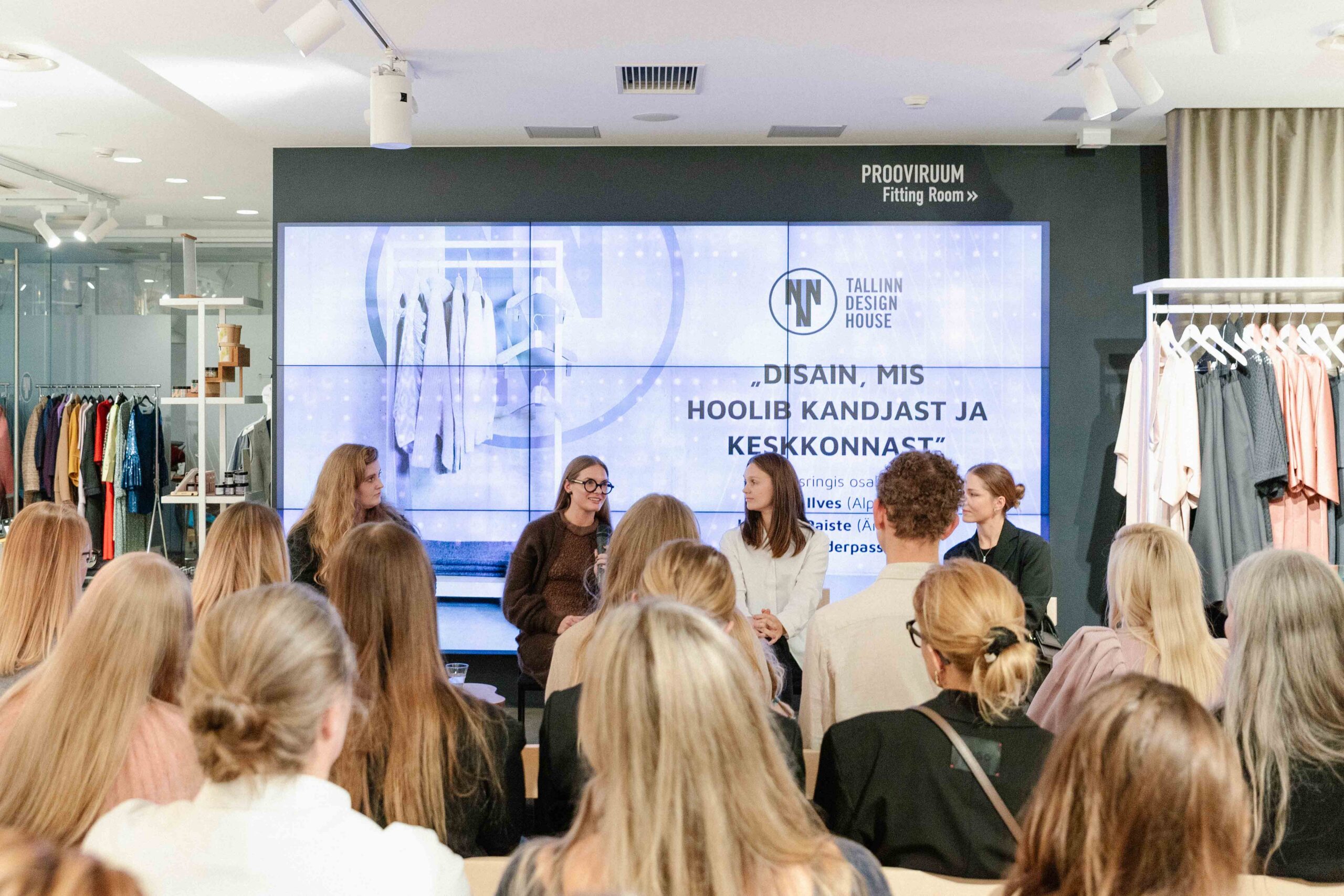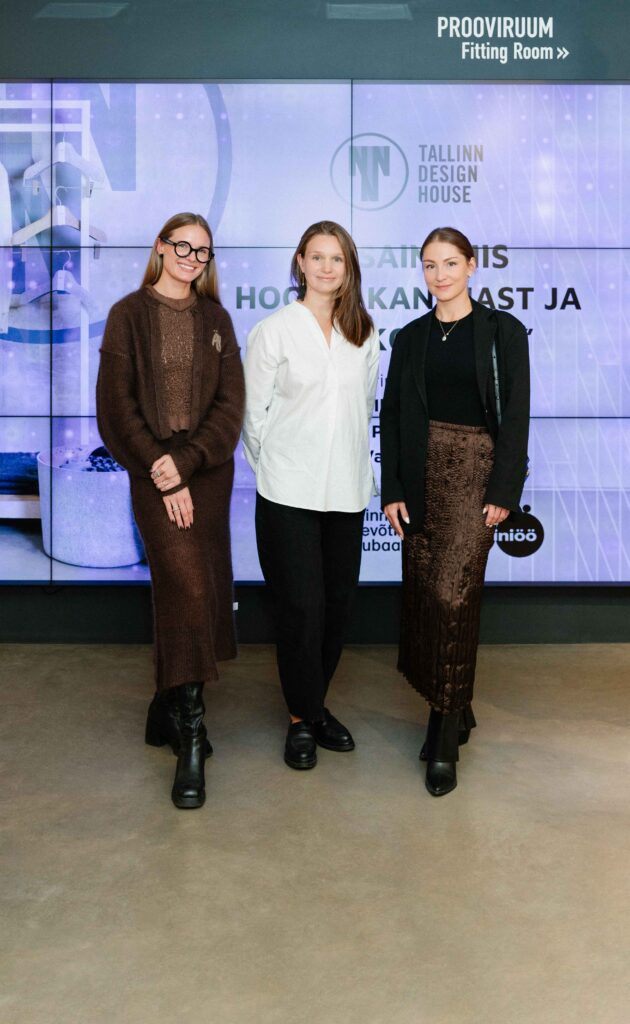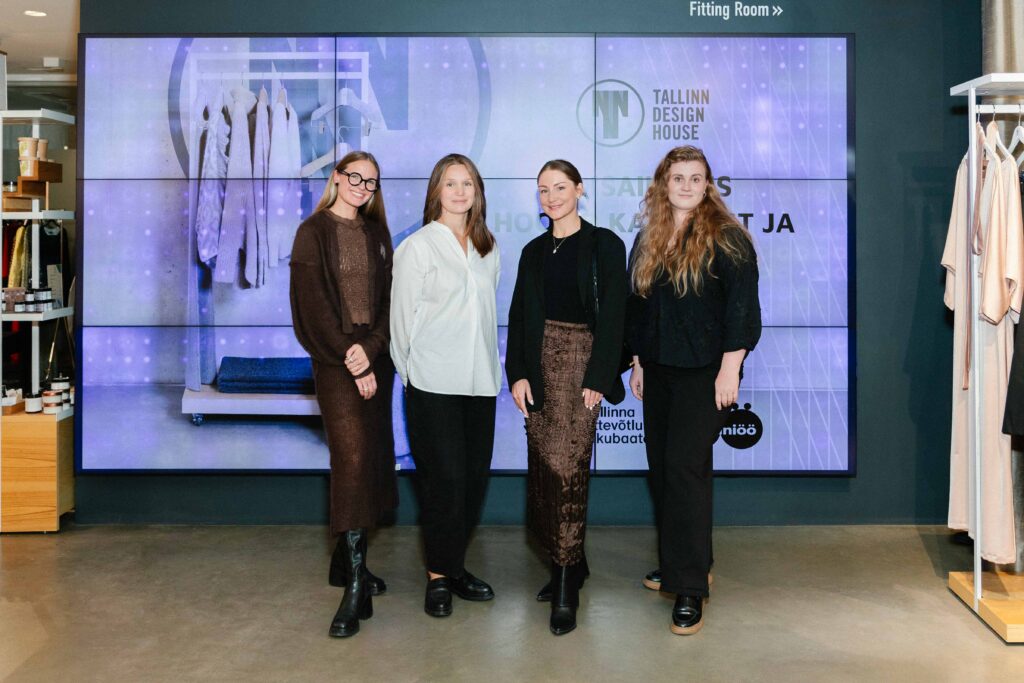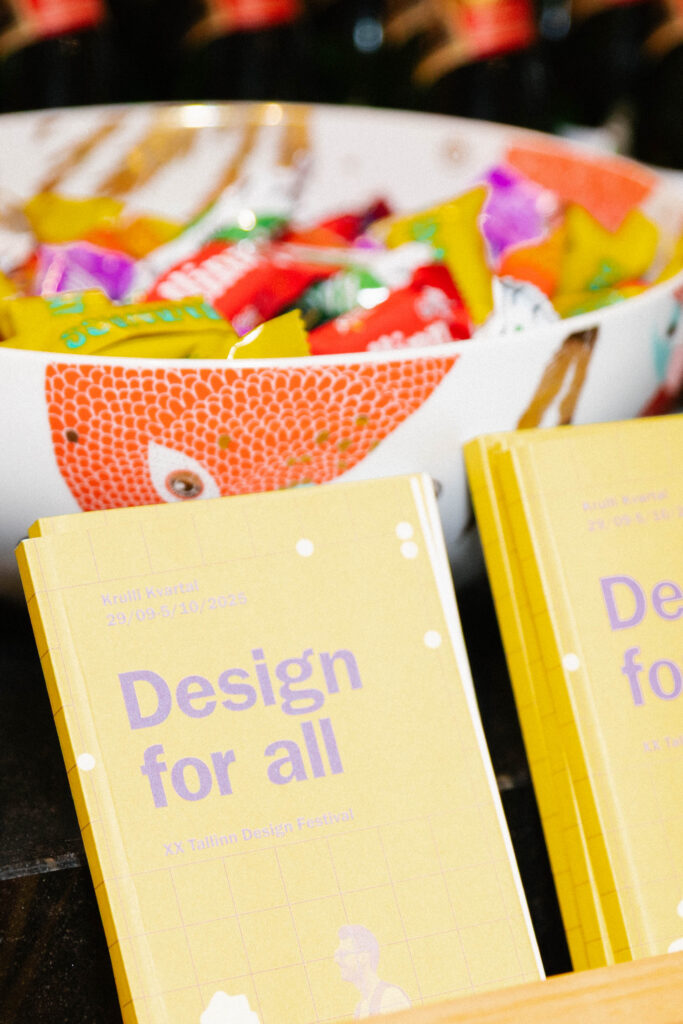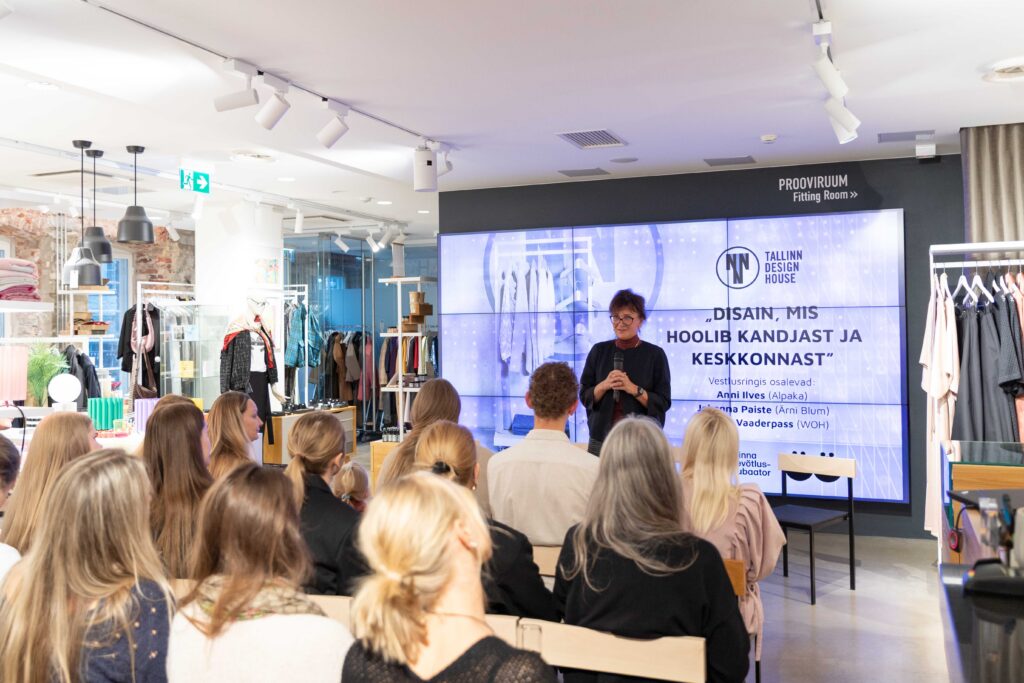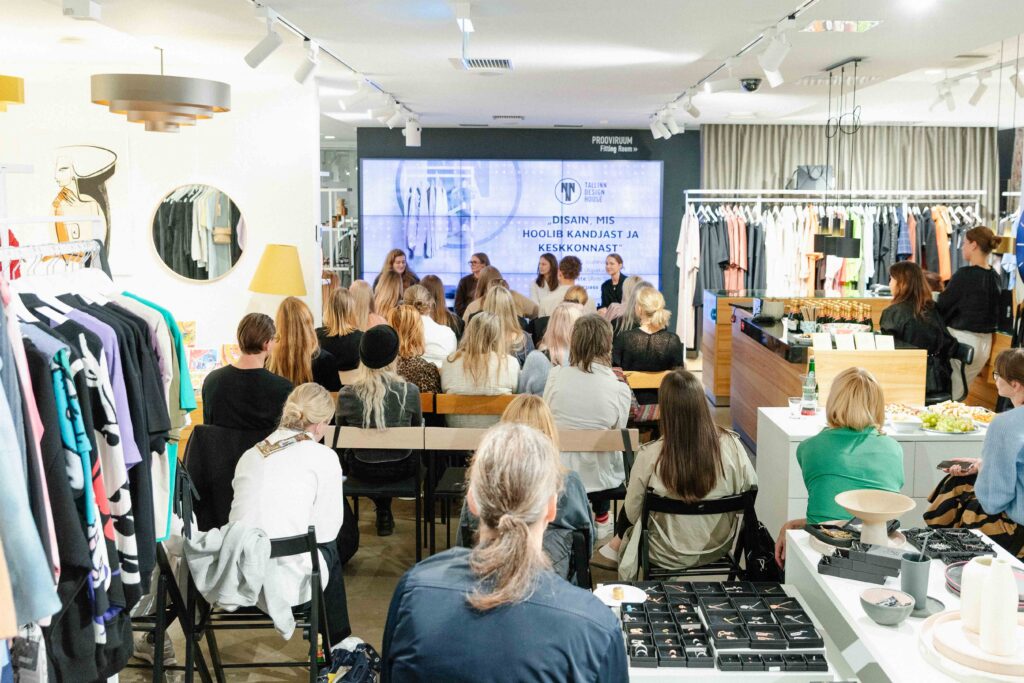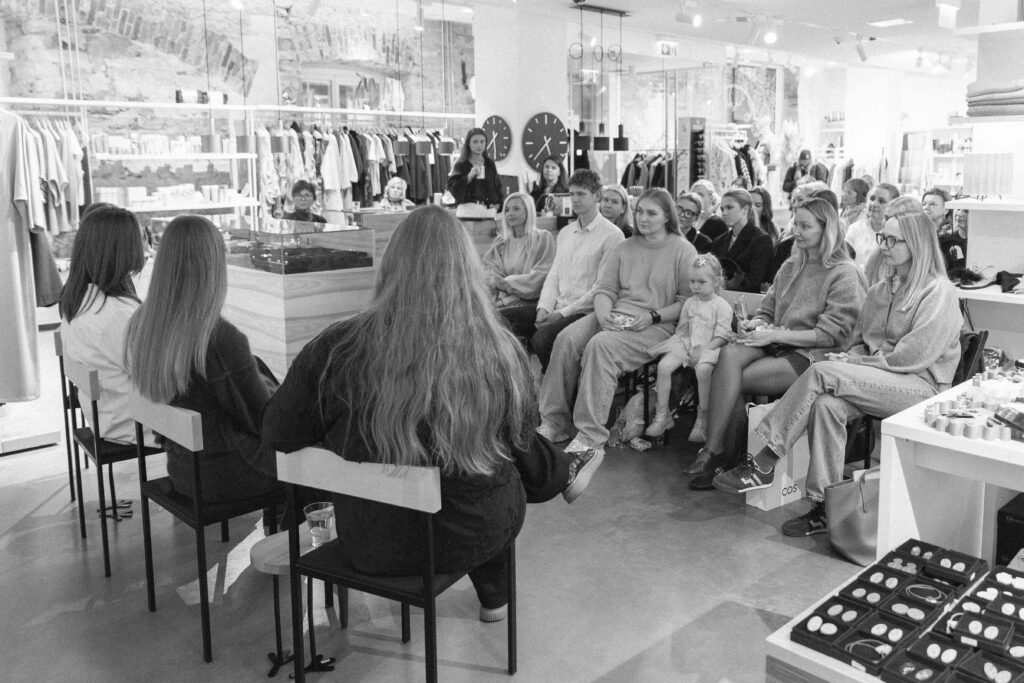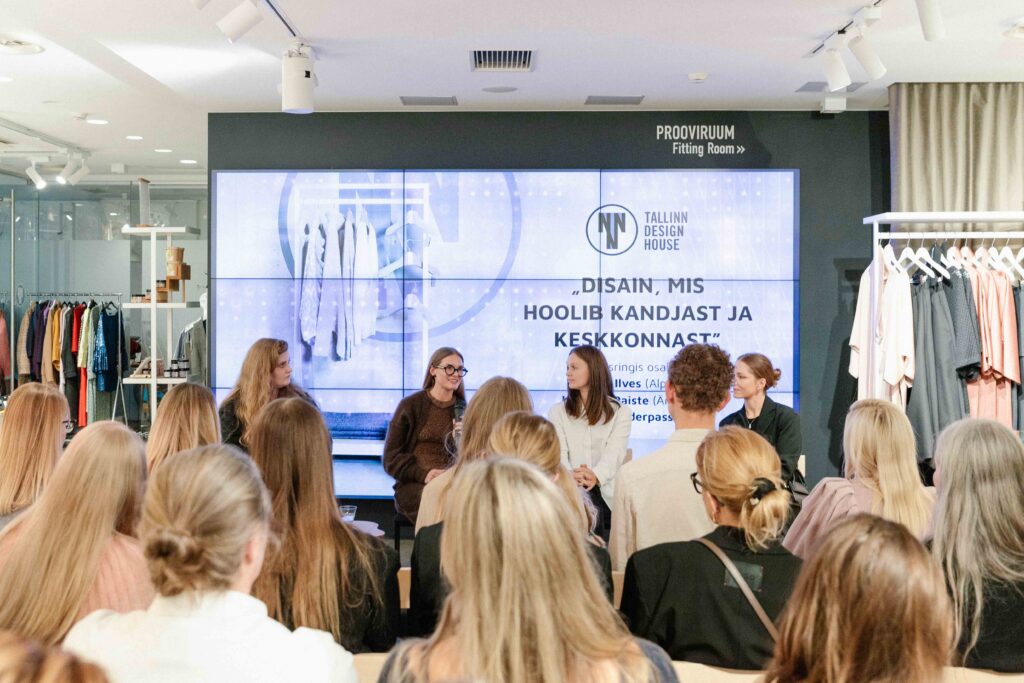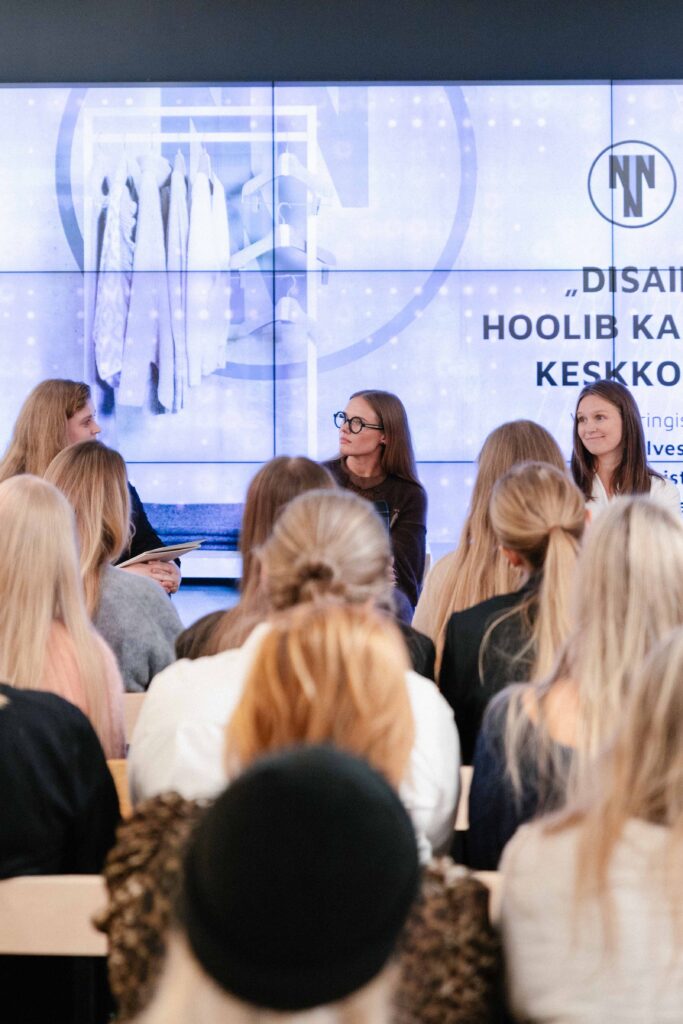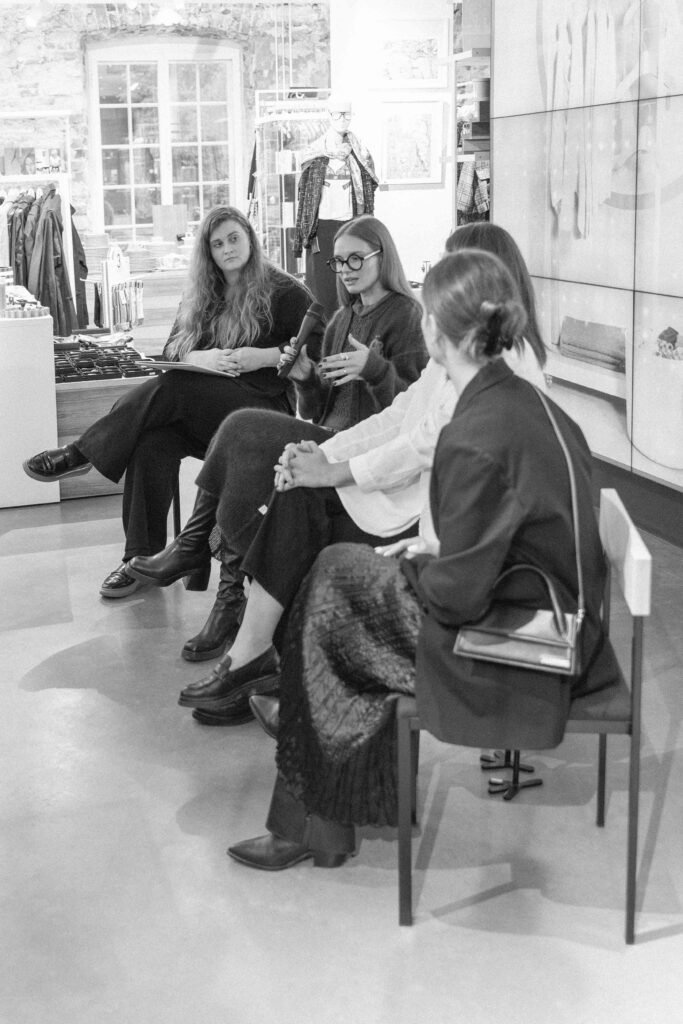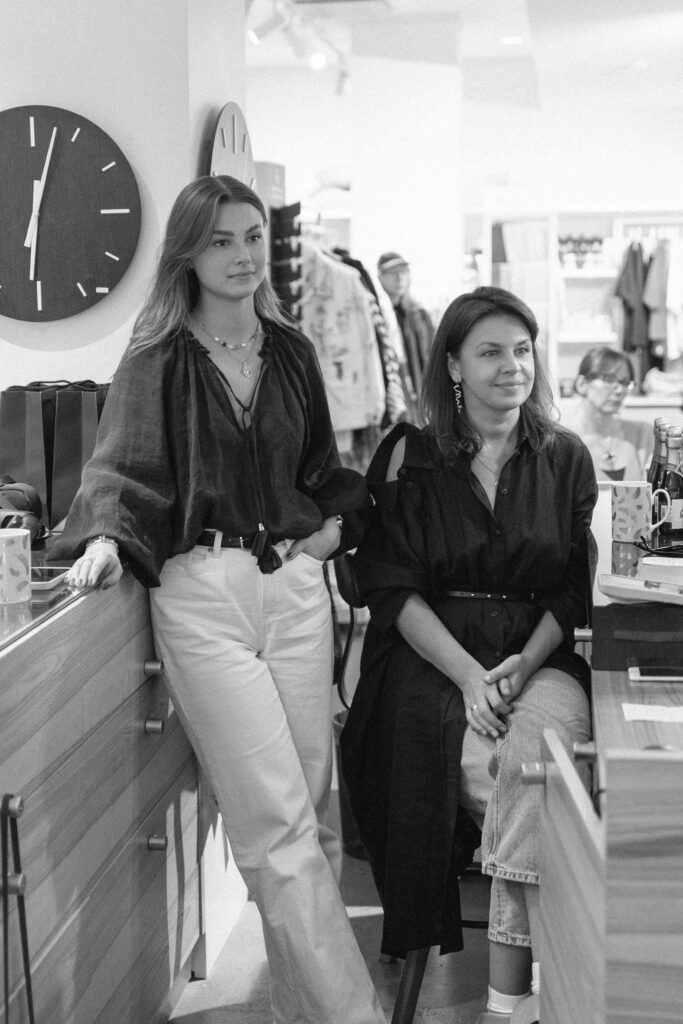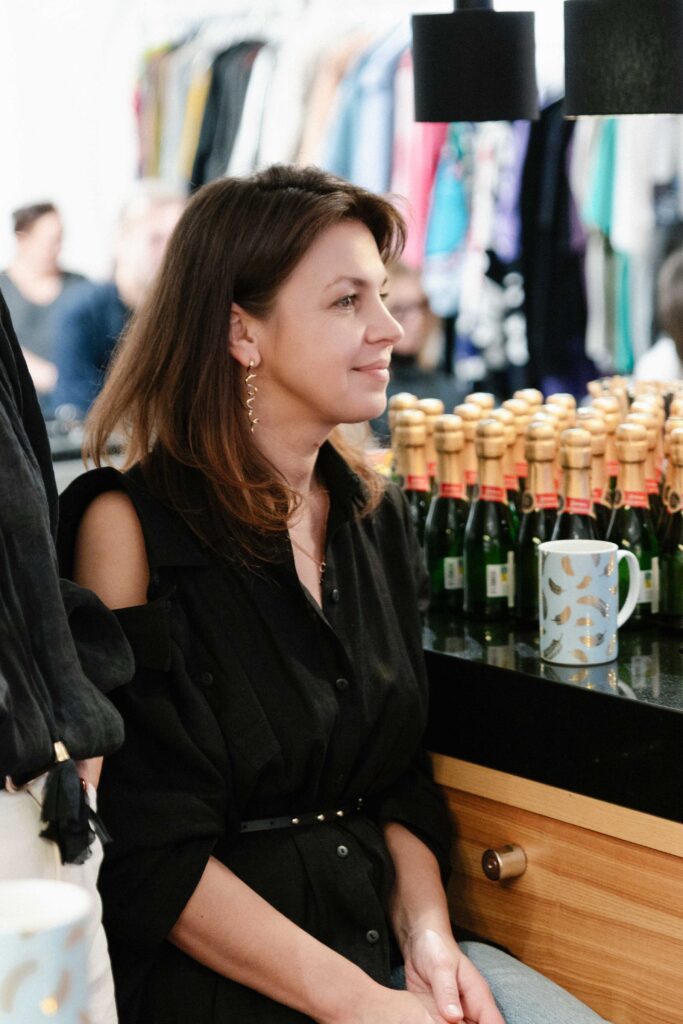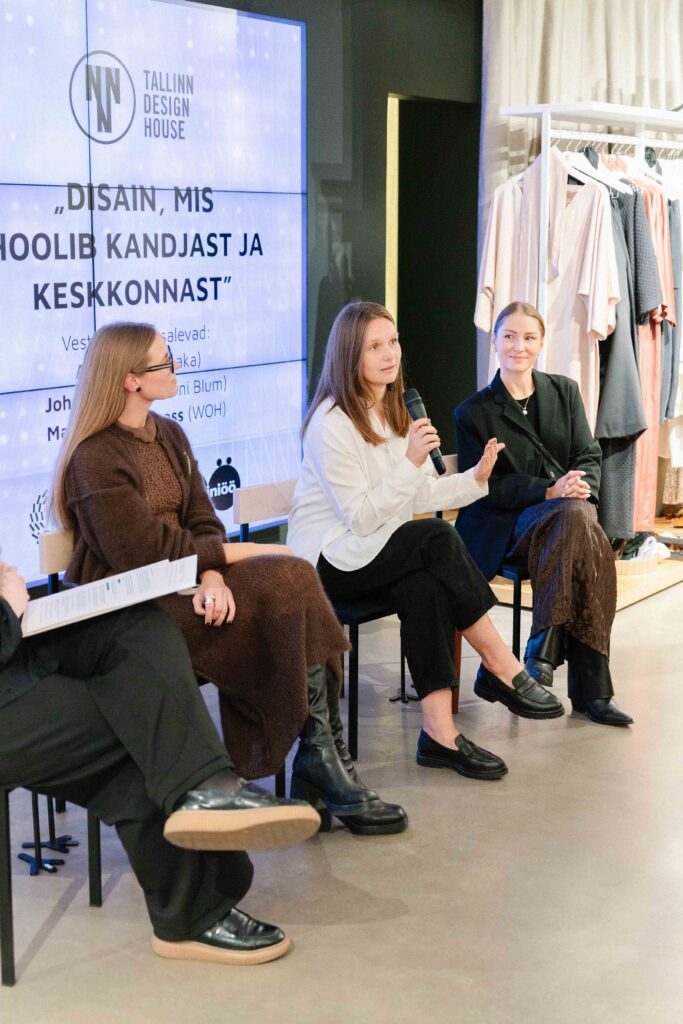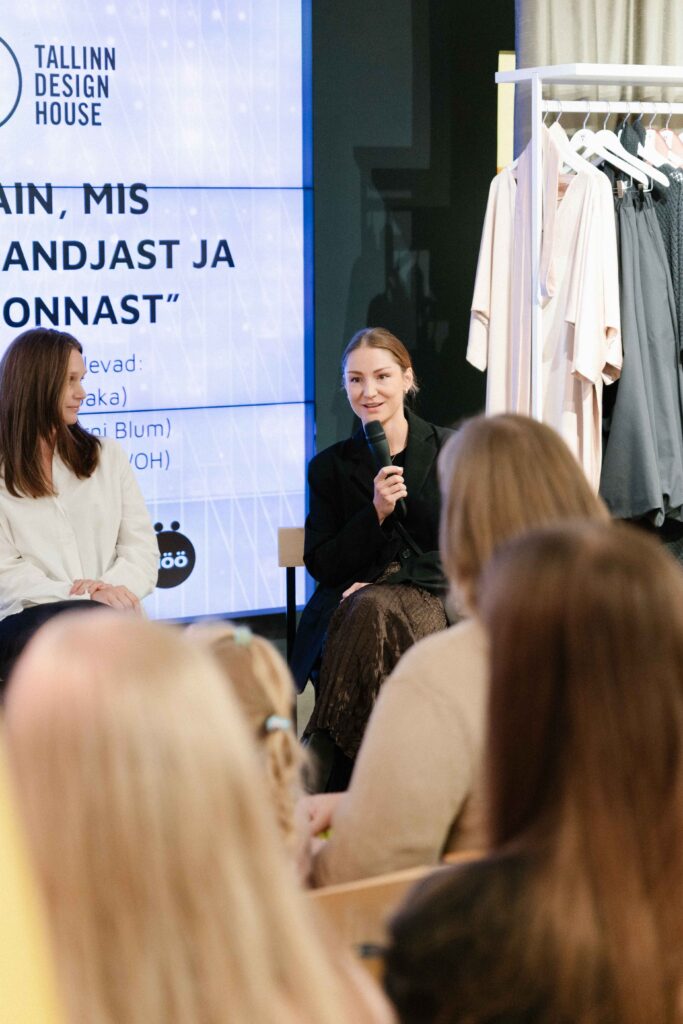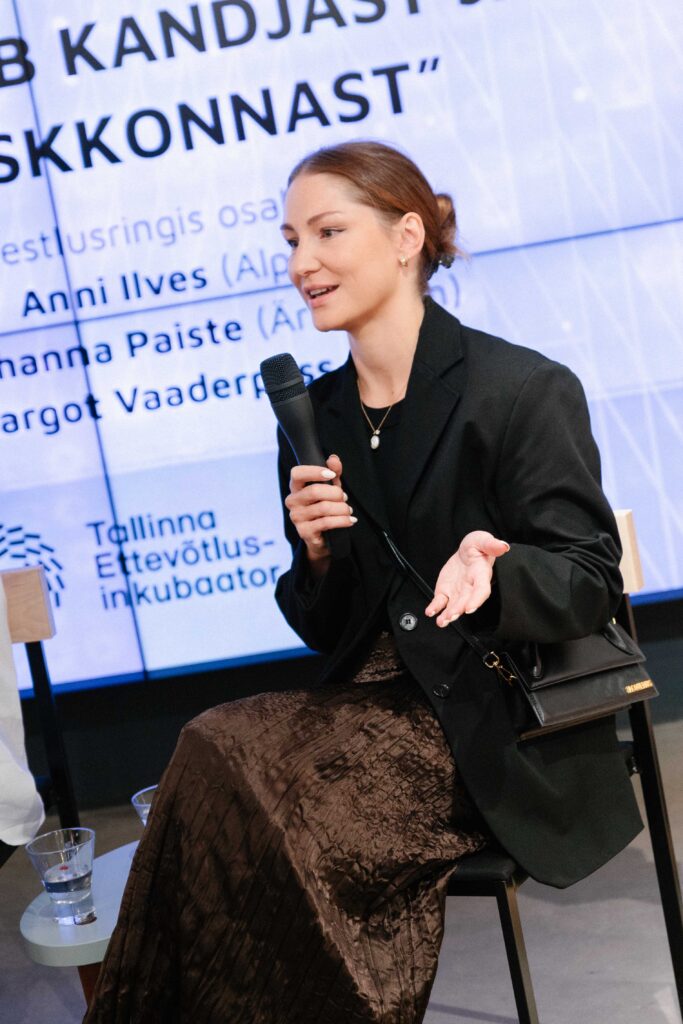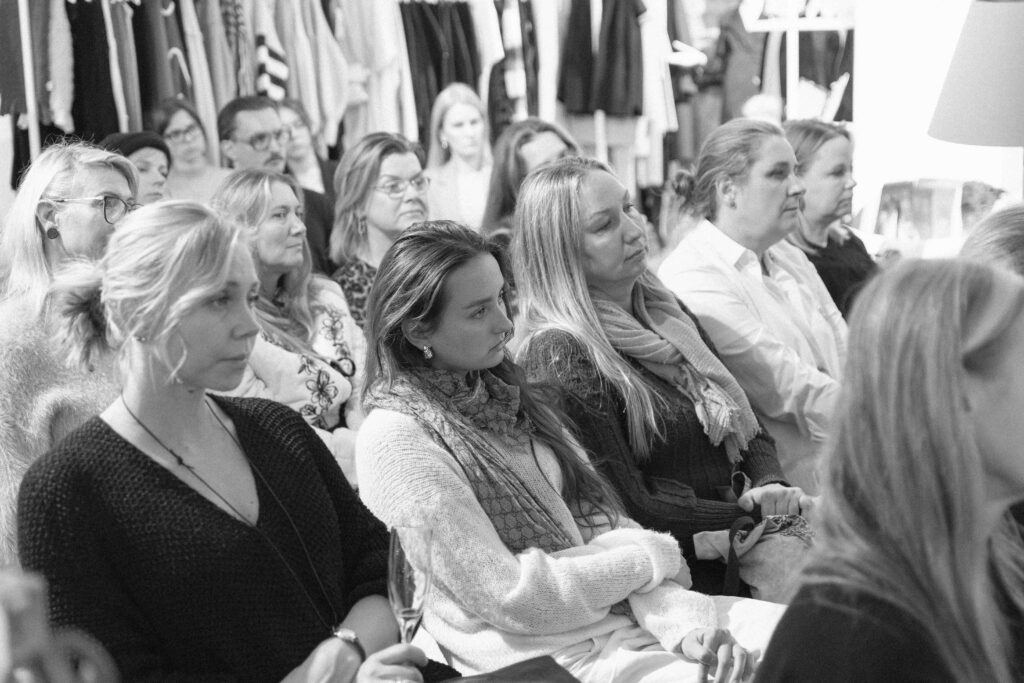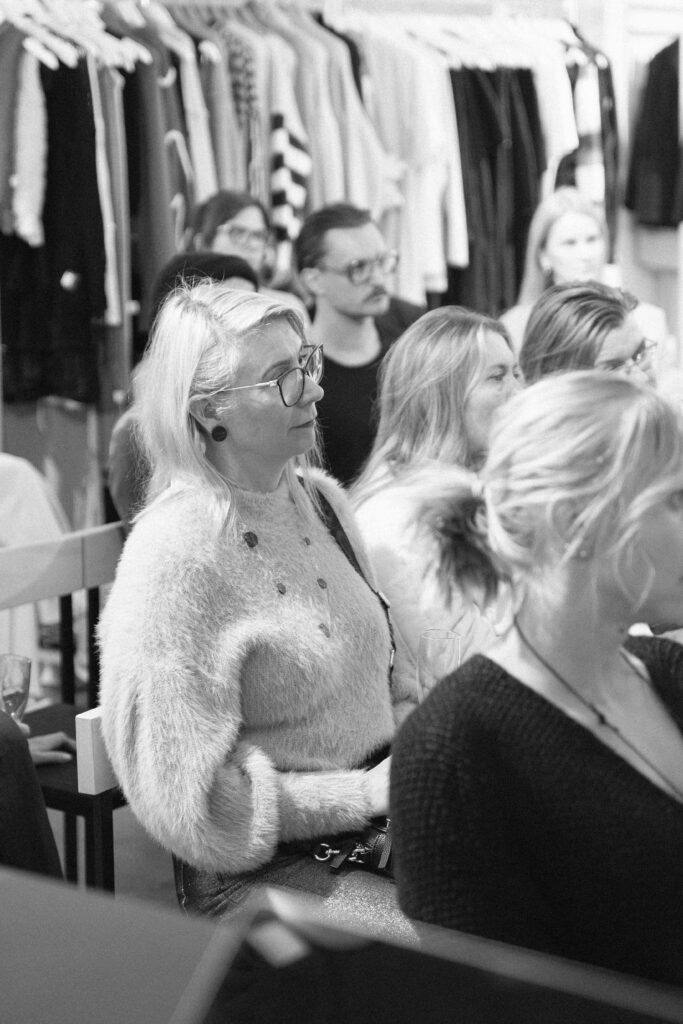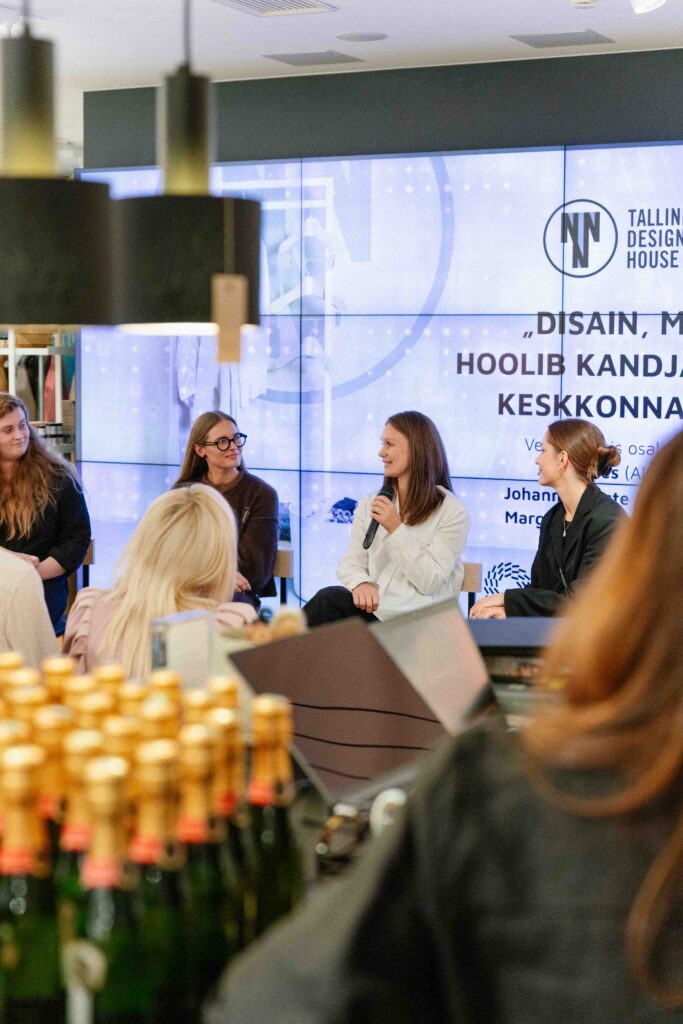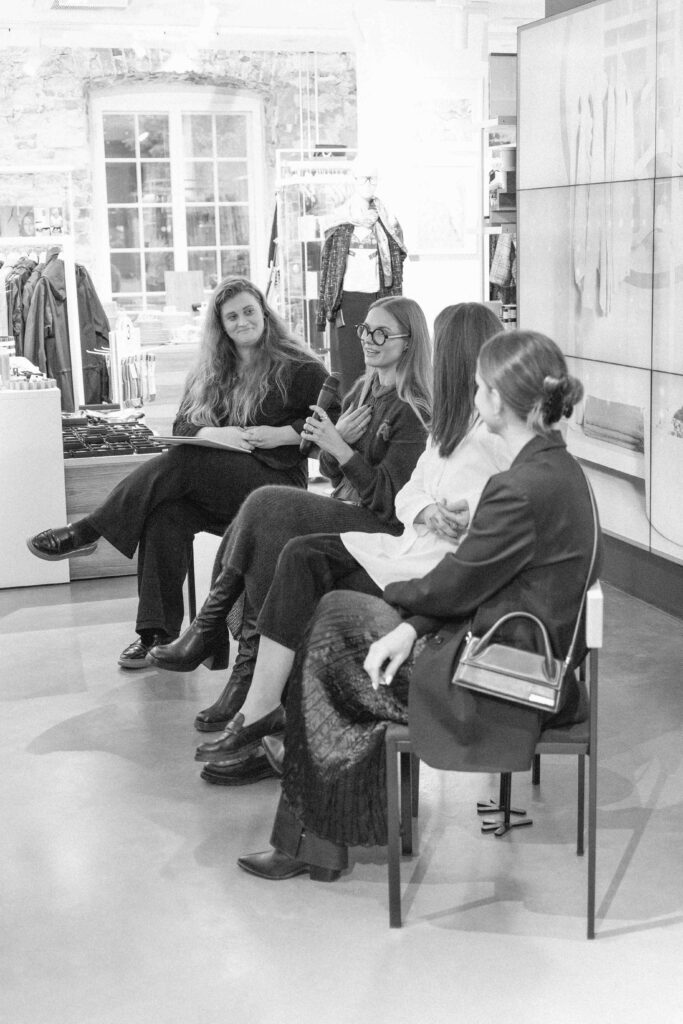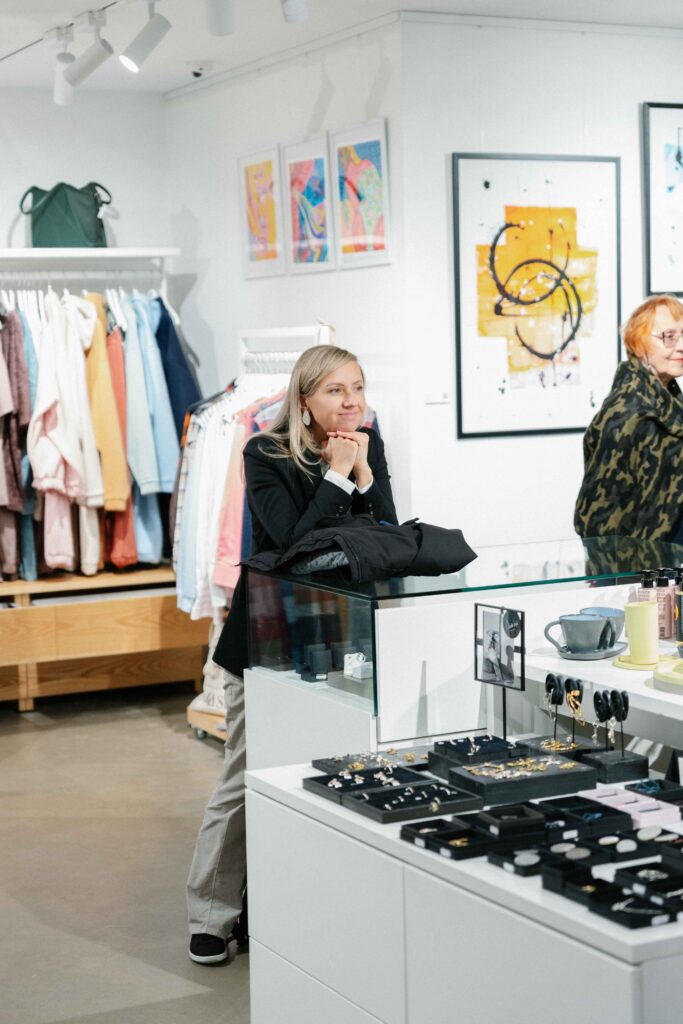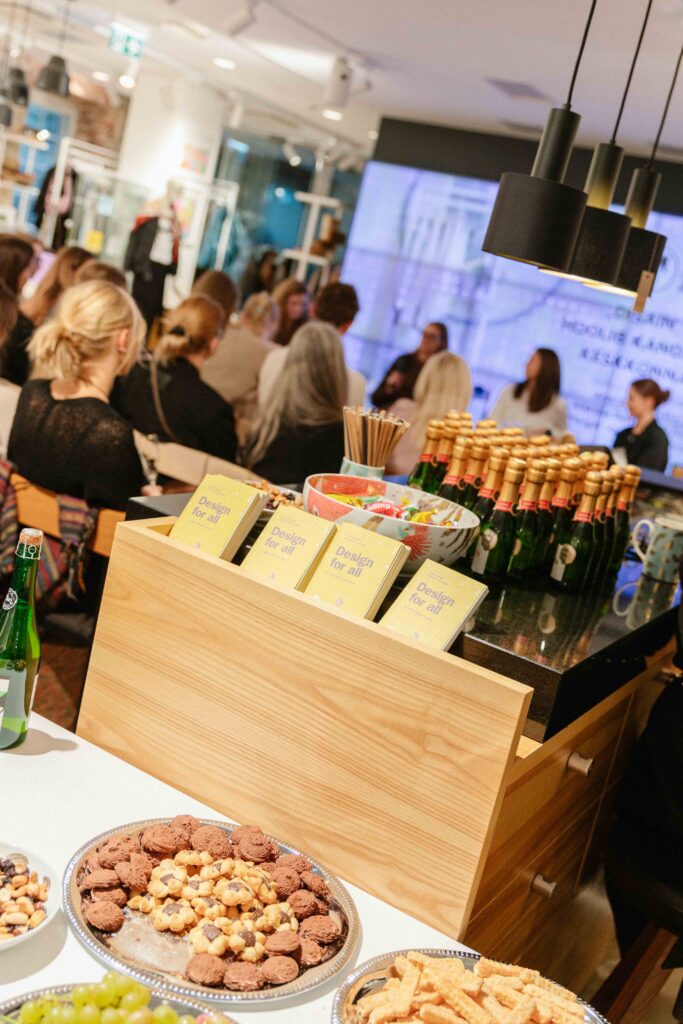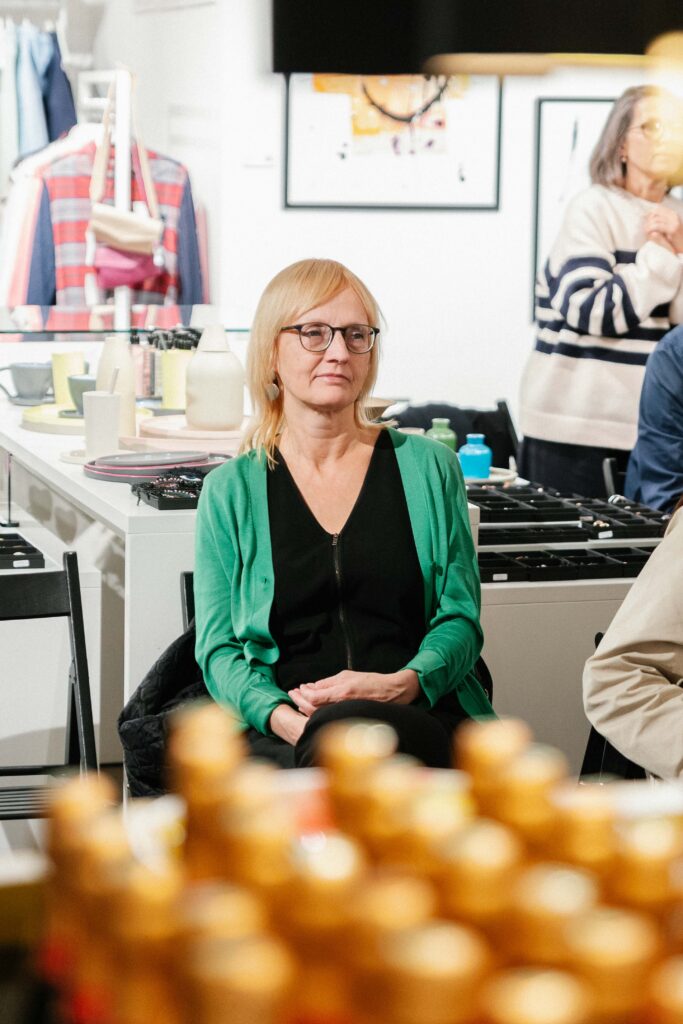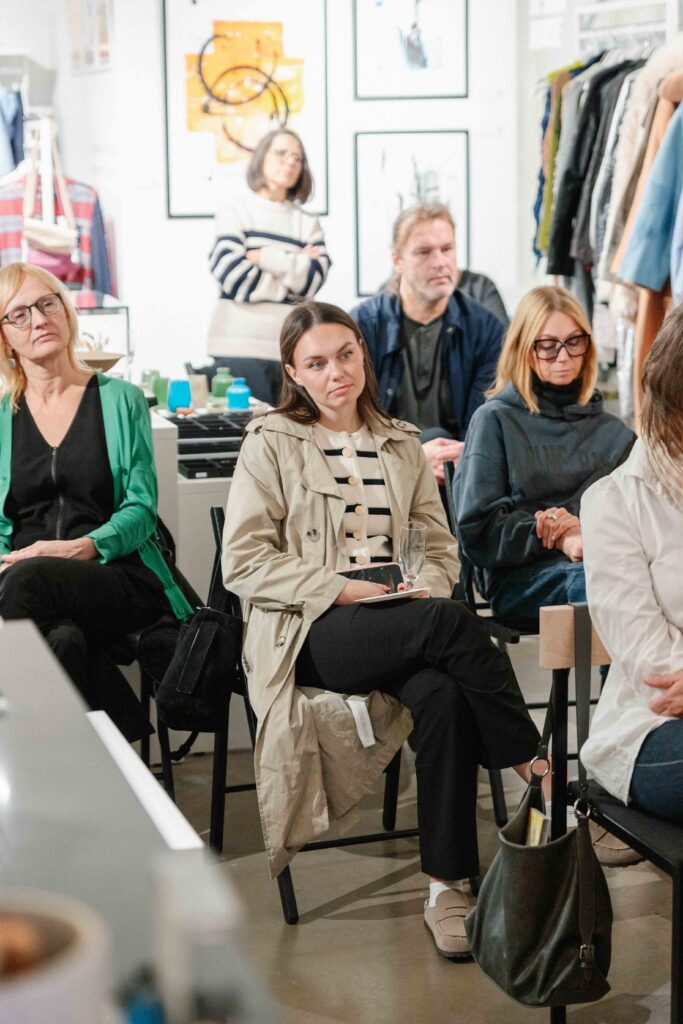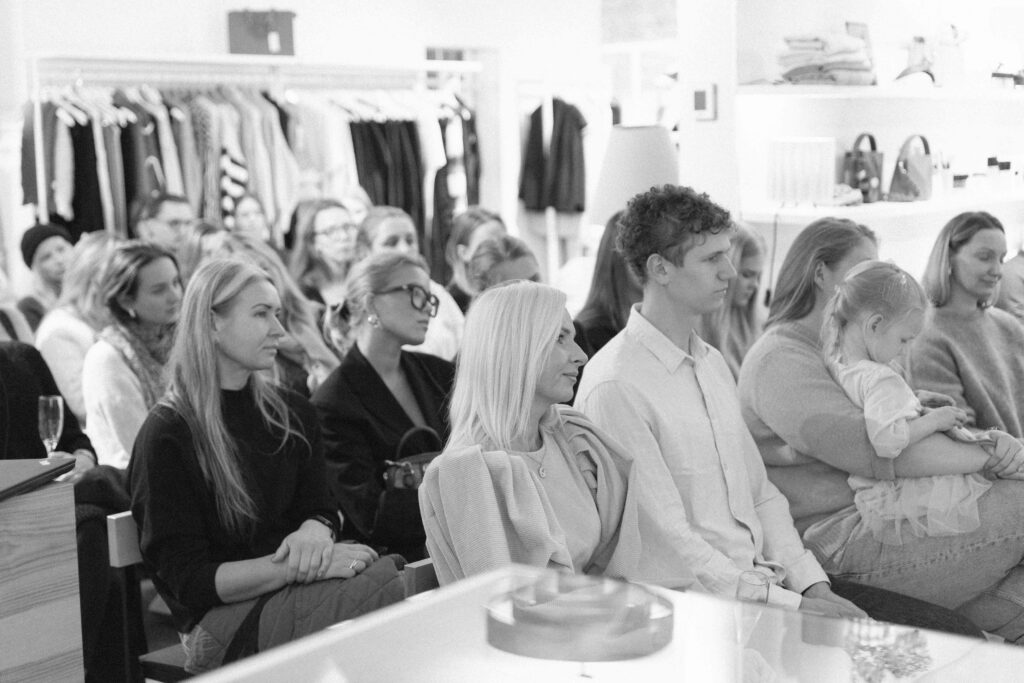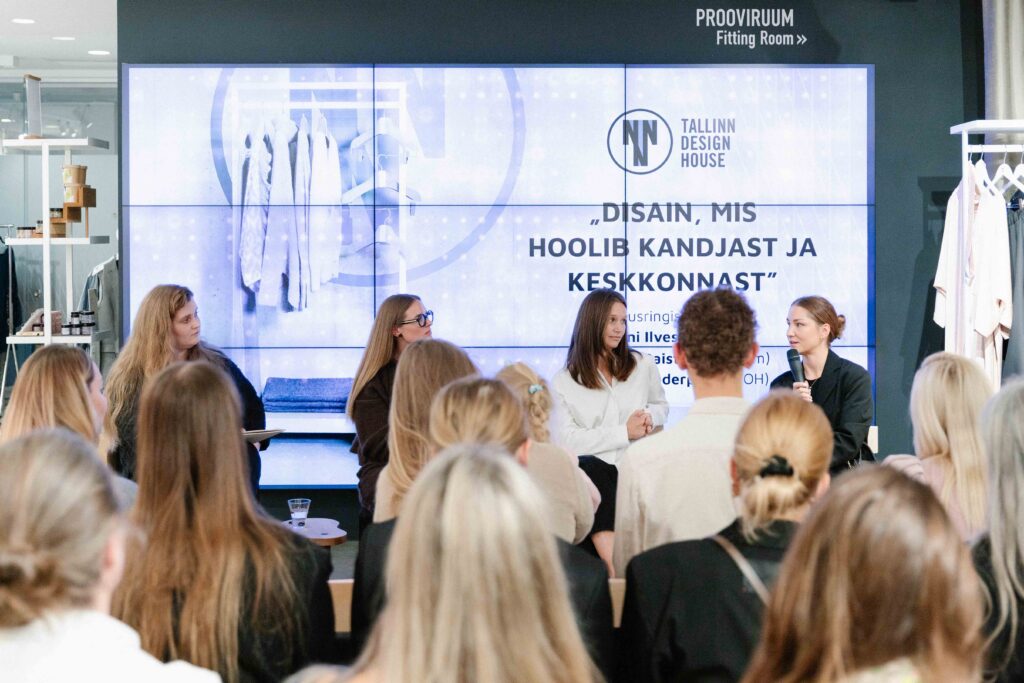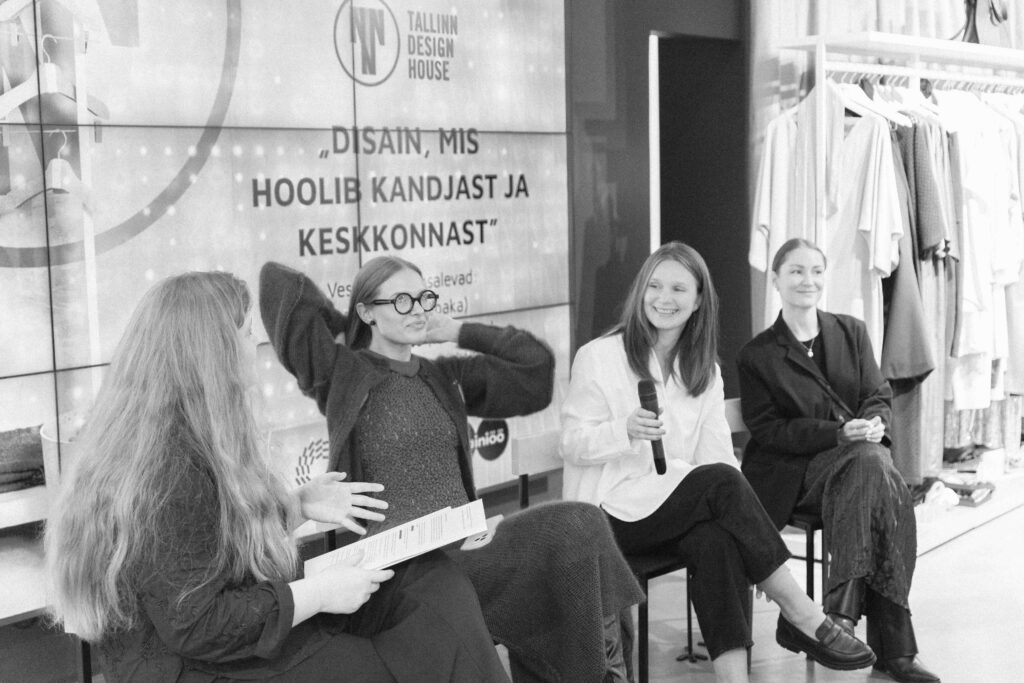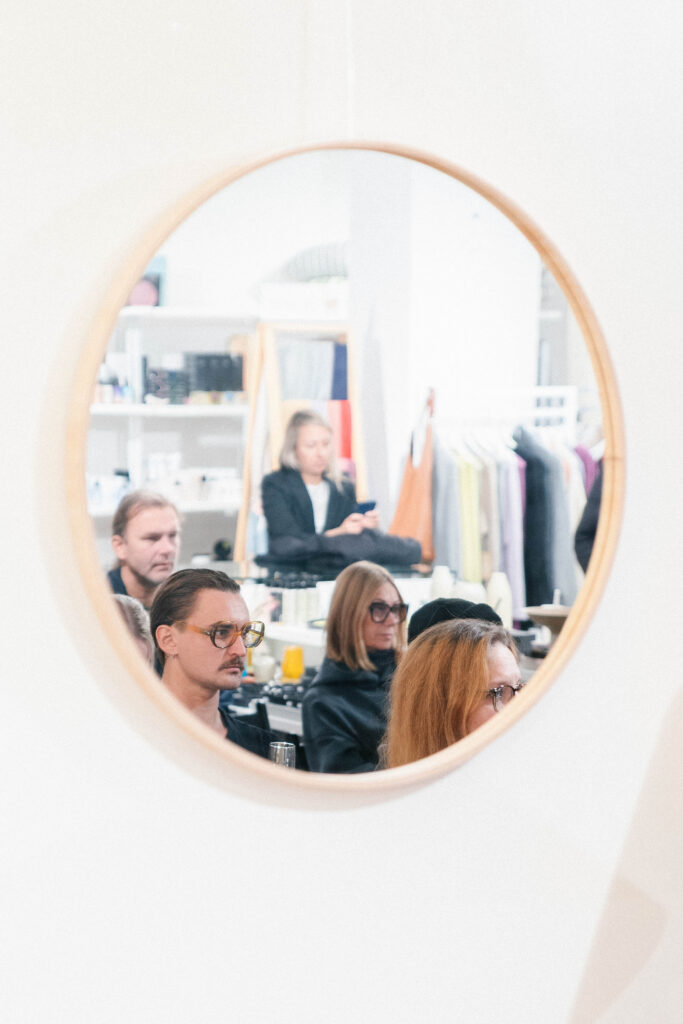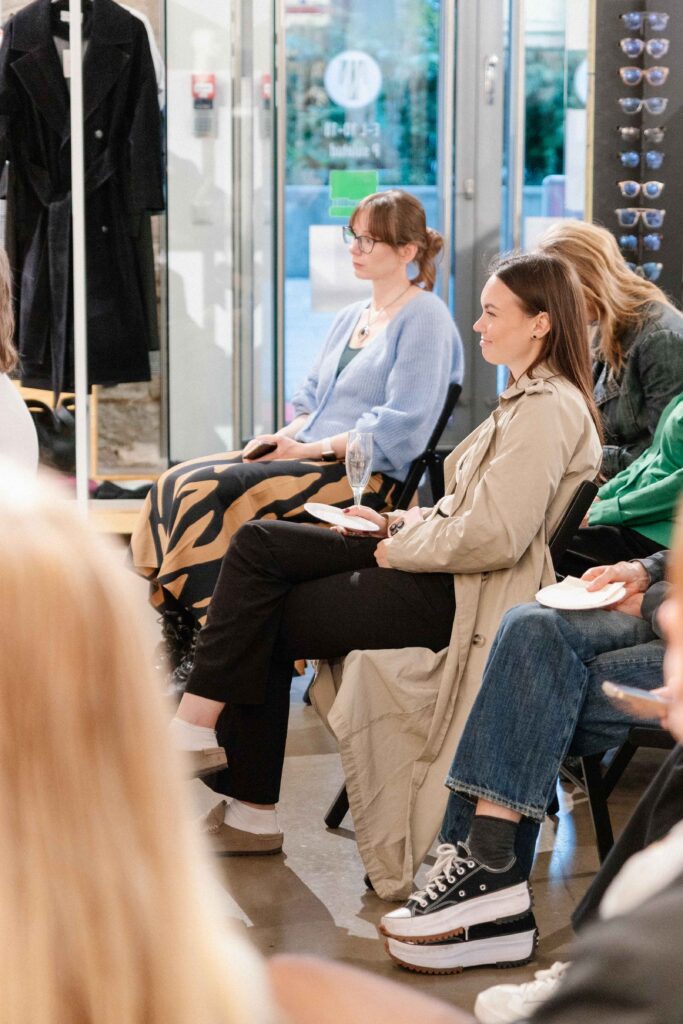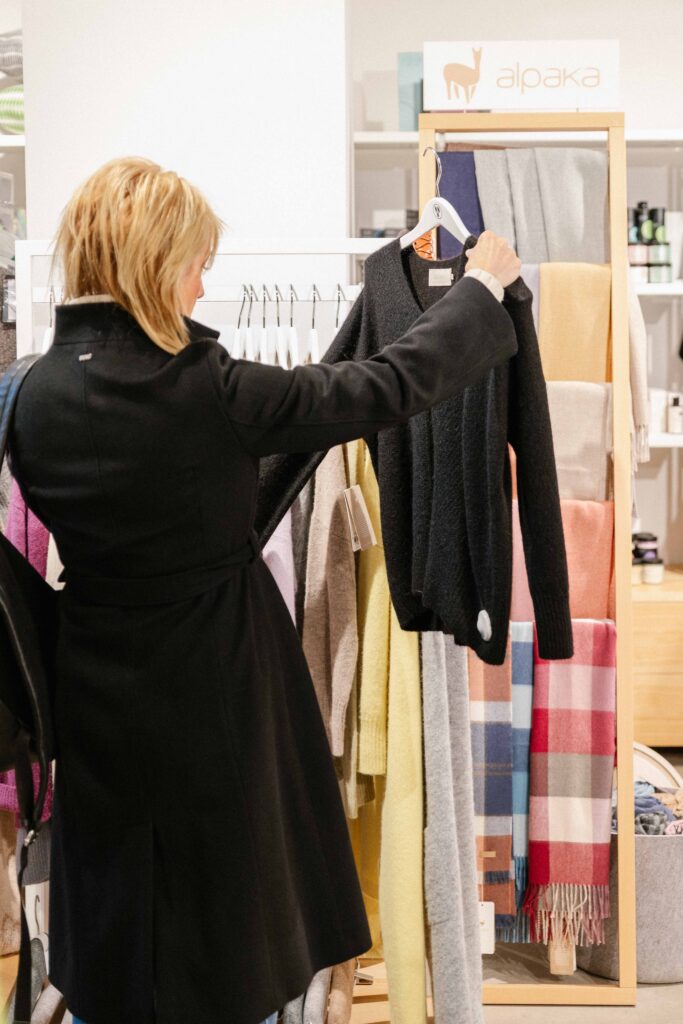All the designers agreed that materials strongly influence both design and creative decisions.
Johanna Paiste explained that working with wool is among the most complex tasks, as Ärni Blum’s knits are made with a zero-waste principle: “We knit garments to shape and work in a way that generates no production leftovers. If I see that an idea can’t be realized using a zero-waste method, I simply don’t make it.”
Anni Ilves noted that alpaca wool has its own character and properties that affect how the yarn behaves and how designs take shape. “The material imposes certain limits, but it also creates new opportunities – every limitation encourages creative solutions,” she said. Alpaka has decided to reduce the use of synthetic fibers and move toward purer natural materials. “Although technologies are advancing, blended fibers still pose challenges in recycling,” explained Ilves.
WOH Studio originated largely from working with recycled polyester felt, which can be heat-formed into different shapes. “In a way, the idea for our first product came directly from the material itself – and from there, the whole brand evolved,” said Vaaderpass. Because recycled felt has a unique pattern and shade each time. “We can’t predetermine what the material will look like—and that’s exactly its charm,” she added.
For Ärni Blum, the origin and natural composition of materials are equally important. The brand uses wool, silk-blend mohair, and organic cotton – ensuring that production aligns with its values. “For example, in the case of merino wool, I’ve found a supplier whose material origin can be traced all the way back to the farm,” said Paiste.
